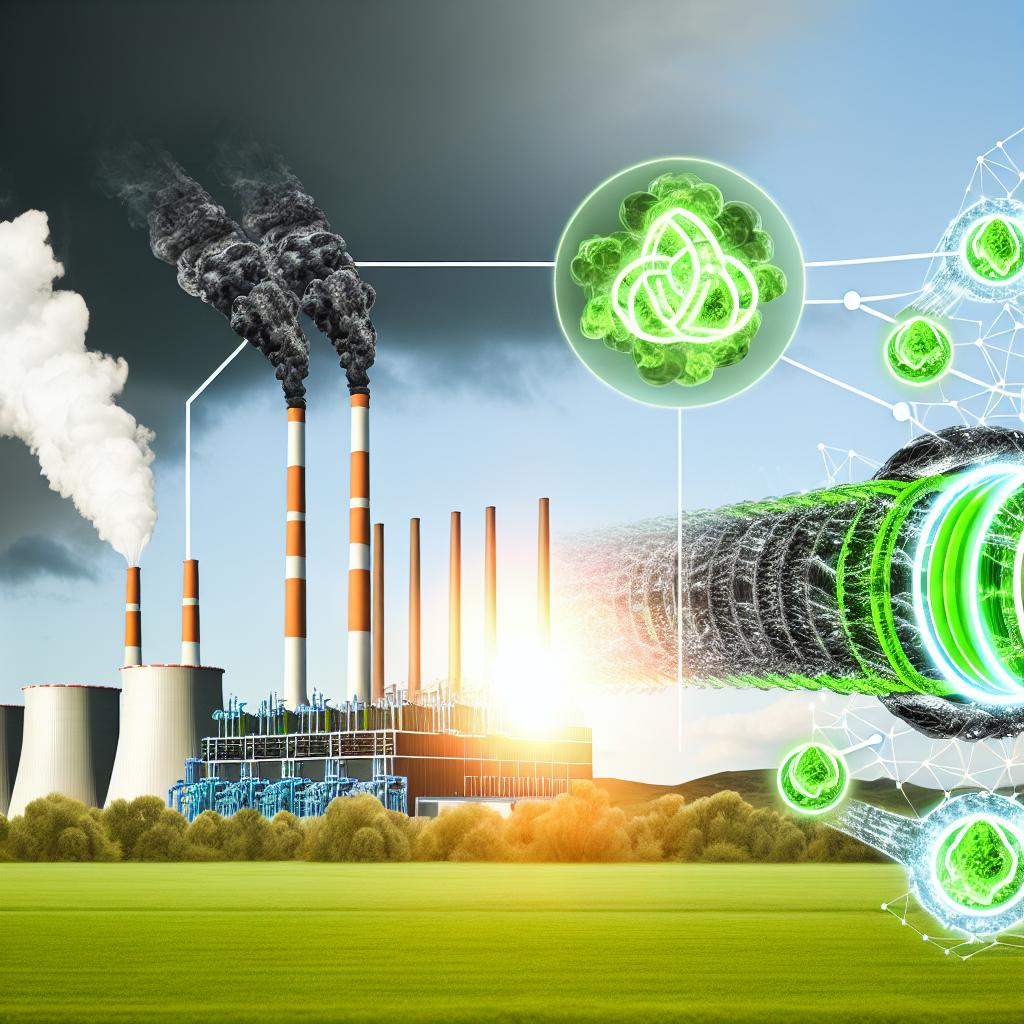
The Importance of Carbon Capture in Green Energy Strategies
Addressing climate change is one of the most pressing challenges the world faces today. As global efforts intensify towards reducing greenhouse gas emissions, carbon capture and storage (CCS) is emerging as a critical component of green energy strategies. The goal of CCS is to prevent carbon dioxide (CO2) from entering the atmosphere by capturing emissions from industrial processes, power generation, and other sources.
Understanding Carbon Capture and Storage
Carbon capture and storage involves three primary steps: capturing the CO2, transporting it to a storage site, and securely storing it underground. The technology is applicable in various industries, including power generation from fossil fuels and manufacturing processes like cement and steel production. Detailed information on CCS can be found in numerous research-based publications, one notable source is from the International Energy Agency.
Capture Technologies
There are multiple techniques employed in capturing CO2, each suitable for different applications. These include post-combustion, pre-combustion, and oxy-fuel combustion. Post-combustion capture is the most mature and widely used technology, involving the removal of CO2 from flue gases after fuel combustion. Pre-combustion and oxy-fuel methods, though less common, offer advantages in specific scenarios.
The post-combustion method can be easily retrofitted to existing power plants, a significant benefit when considering infrastructure that is already in place. This aspect makes it a preferred short-term solution for reducing emissions from existing facilities. In contrast, pre-combustion capture involves converting fossil fuels into a mix of hydrogen and CO2 before combustion, which is usually suited to new power plants designed with this technology in mind.
Oxy-fuel combustion involves burning the fuel in pure oxygen, resulting in a flue gas that is mainly water vapor and CO2. This streamlining of post-processes provides an advantage in separating CO2, potentially simplifying the capture process. Despite the promise shown by these technologies, ongoing research is required to optimize each method’s efficacy and cost-effectiveness.
Transportation and Storage
Once captured, CO2 must be transported to storage sites. This transportation is most commonly conducted via pipelines, widely regarded as a safe and efficient method. The infrastructure needed for such pipelines might leverage existing networks used for oil and natural gas, thus reducing the startup cost and timeline for implementation.
Storage primarily occurs in deep geological formations, including depleted oil and gas fields, saline aquifers, and unminable coal seams. Saline aquifers are vast underground layers of water-bearing permeable rocks; these formations offer significant capacity for CO2 storage. Similarly, depleted oil and gas fields present already mapped and understood geology, providing a potentially safer storage option and further incentive to develop CCS technology.
CCS in the Context of Green Energy
Integrating CCS into green energy strategies offers numerous benefits. It not only reduces emissions from existing power plants but also allows for the continued use of fossil fuels during the transition to more sustainable energy sources. Additionally, CCS can contribute to achieving negative emissions when combined with bioenergy (BECCS), thus playing a role in global efforts to limit temperature rise.
The ability of CCS to provide negative emissions is particularly significant in reaching net-zero targets. In settings where BECCS is deployed, biomass absorbs CO2 from the atmosphere during growth. Upon combustion for energy, the CO2 captured is then permanently sequestered underground, effectively removing carbon from the atmosphere.
Complementary Role in Renewables
While renewable energy sources like wind and solar are essential for reducing reliance on fossil fuels, their intermittent nature requires complementary technologies. CCS provides a reliable option to offset emissions in periods of low renewable energy generation. Moreover, the development of further advancements in CCS technology can significantly decrease costs and enhance integration with renewable systems.
It is important to note that not all sectors can be easily transitioned to renewables, such as heavy industry and cement manufacturing. In these sectors, CCS could provide a mechanism to manage emissions until alternative low-carbon technologies are mature and financially viable. Moving forward, the integration of CCS into such industries implies a pathway to net-zero emissions that could be much more pragmatic and economically feasible.
Challenges and Future Developments
Despite its potential, CCS faces several challenges, including high costs and the need for supportive policy frameworks. Technological advancements and economies of scale are crucial for the reduction of capture and storage costs. Future developments in this sector are likely to focus on enhancing efficiency, developing new capture materials, and exploring innovative storage techniques, such as carbon mineralization.
One of the primary cost drivers in CCS is capturing CO2. Research into new solvents, membranes, and adsorbents aims to lower the size and energy requirements of current technologies while increasing the amount of CO2 captured. Additionally, carbon mineralization—a process that converts CO2 into stable minerals—holds promise but requires further investigation to be viable on a large scale.
Regulatory and Public Acceptance
For CCS to reach its full potential, supportive policies and regulations are essential. Governments worldwide are encouraged to provide incentives for research, development, and deployment. Public acceptance remains another hurdle; clarifying the safety and benefits of CCS is crucial for gaining widespread approval.
Education and transparent communication about the technology’s safety and effectiveness will play a vital role in improving public perception. Addressing concerns regarding potential environmental impacts and reinforcing the idea that CCS can safely store CO2 for the long term can help in gaining public trust.
In conclusion, carbon capture and storage is a vital component in the portfolio of technologies necessary for a sustainable energy transition. As the global community pursues ambitious climate targets, CCS will play an increasingly important role in bridging the gap between fossil fuel reliance and a zero-carbon future. Its ability to mitigate emissions from hard-to-abate sectors while complementing renewable energy systems highlights its indispensable role in the global effort to combat climate change.